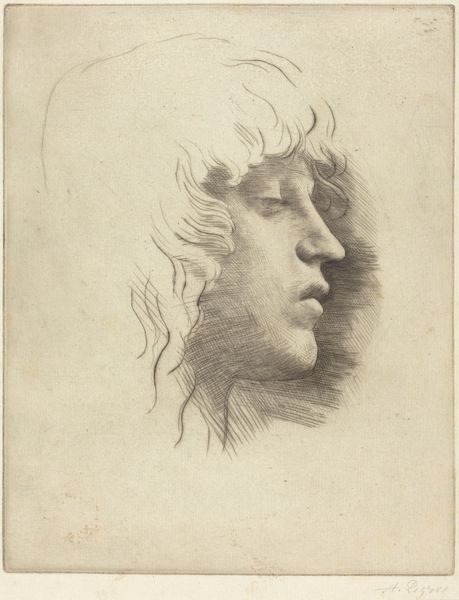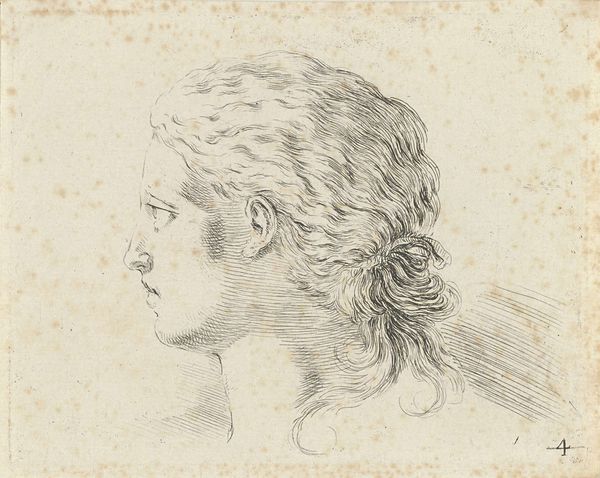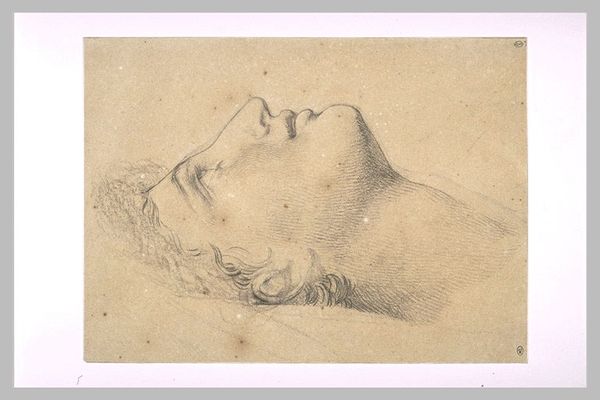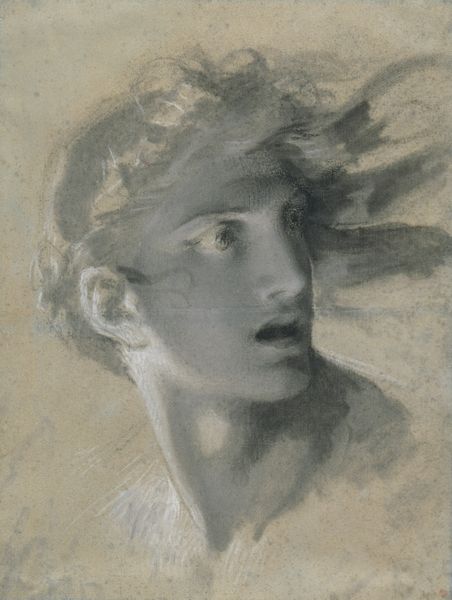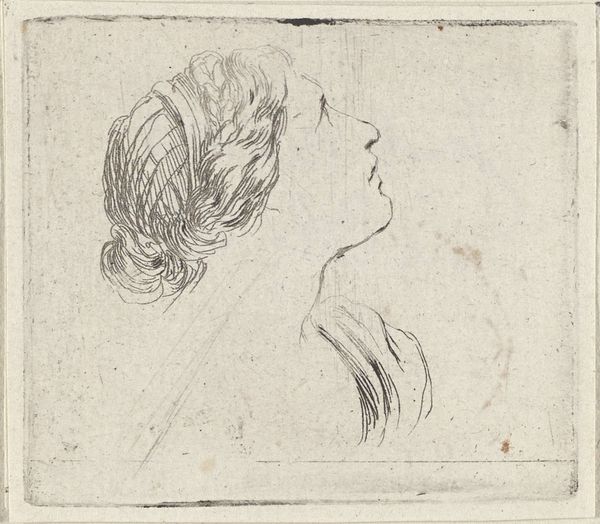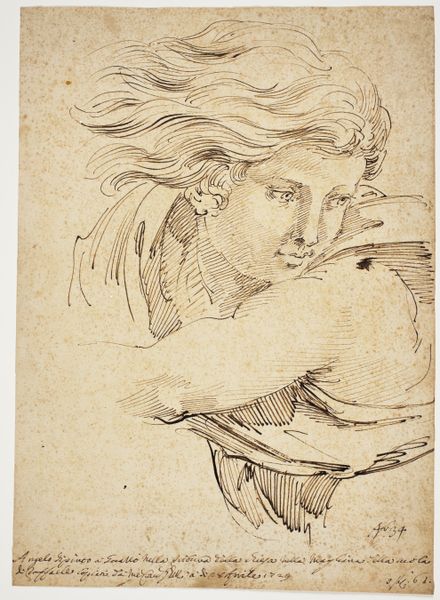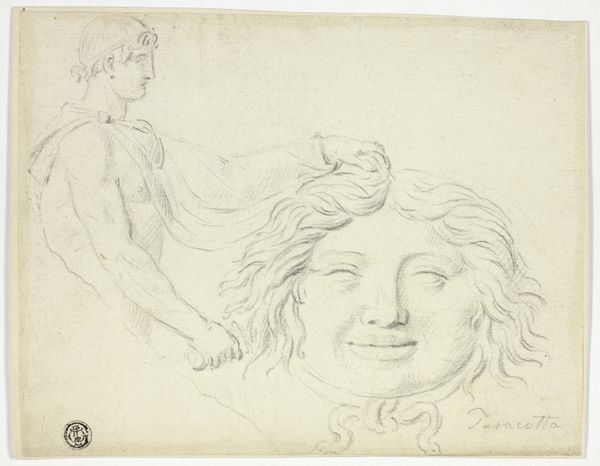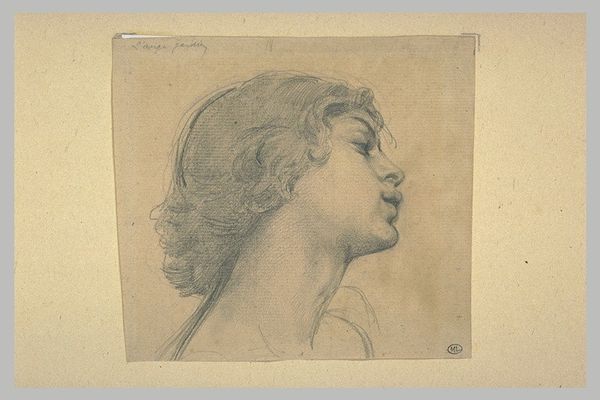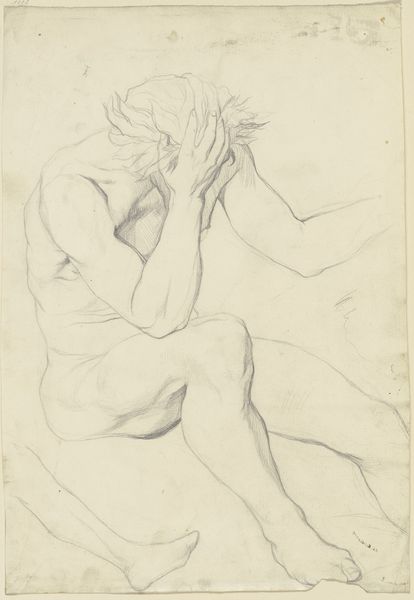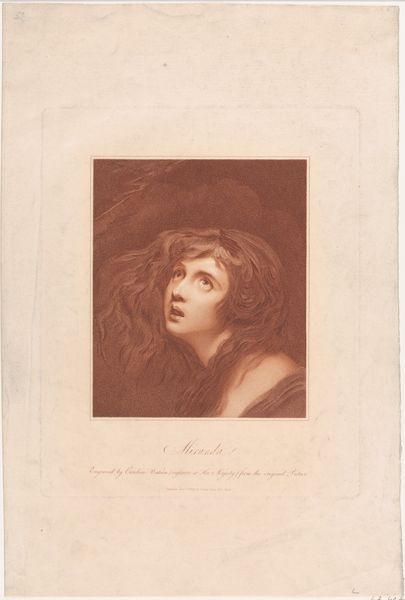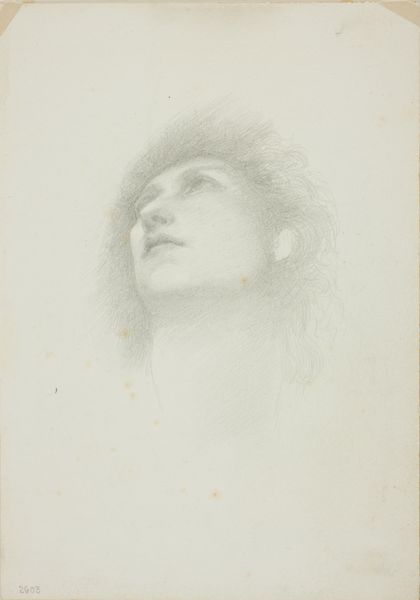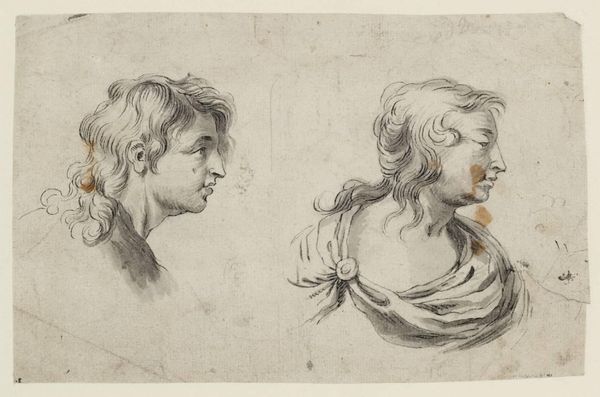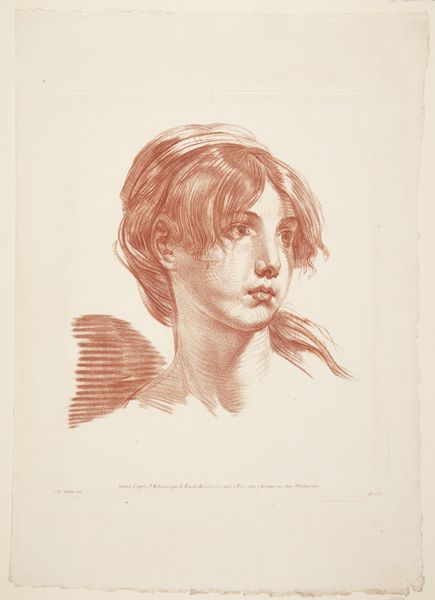
#
facial expression drawing
#
pencil sketch
#
portrait reference
#
pencil drawing
#
animal drawing portrait
#
portrait drawing
#
facial study
#
facial portrait
#
portrait art
#
digital portrait
Dimensions: height 383 mm, width 452 mm
Copyright: Rijks Museum: Open Domain
Curator: Looking at Gilles Demarteau's "Head of a Man with Waving Hair," created sometime between 1732 and 1776, I'm immediately struck by its dynamic energy, all caught in a sepia-toned sketch. What are your initial thoughts? Editor: It gives off such a melancholic air, almost theatrical. The subject's parted lips and turbulent hair suggest some intense, internal drama is unfolding. What about its formal properties intrigues you? Curator: I think it is the use of line. Notice how Demarteau coaxes form and emotion with this cross-hatching, particularly in the hair – capturing a sense of movement. It's almost as though the hair has a mind of its own. Editor: The hatching creates a kind of background vibration that echoes the dynamism you mention; almost like an aura defining the borders of a psychological state. His hair—such a powerful signifier—it feels almost untamed. I wonder what it might mean? Curator: Well, beyond mere aesthetics, Demarteau was, I think, attempting to dissect and capture raw human expression and mood. What he was trying to communicate with us. Perhaps the turbulent hair, coupled with that slightly open mouth, suggests an attempt to portray someone caught between thought and expression? Editor: So, is it possible this sketch could be considered part of an archive of 18th-century facial expressions? Like a study for a larger narrative composition—an attempt to catalog, even scientifically, the landscape of emotion? Curator: That's certainly a compelling idea! This "Head of a Man," beyond being an aesthetically pleasing piece, acts as a mirror, reflecting back our own emotional states and the human condition itself. Editor: I couldn't agree more. It is thought-provoking how a seemingly simple sketch manages to reveal such complex inner turmoil, using just line and form. Curator: Exactly, and isn't that the power of art—to speak volumes with the fewest of lines? Editor: Indeed. Thanks for helping unpack its nuances.
Comments
No comments
Be the first to comment and join the conversation on the ultimate creative platform.
